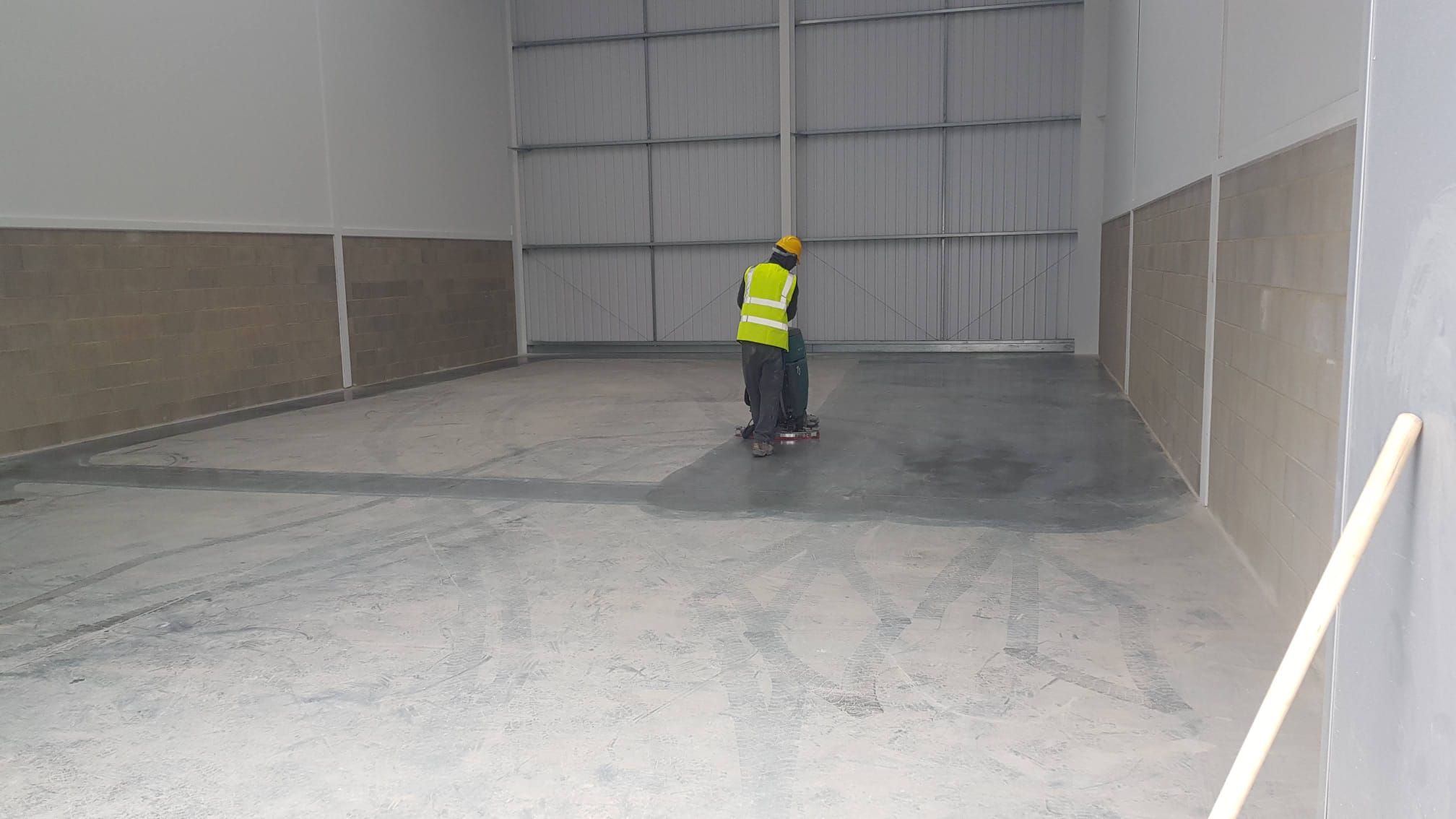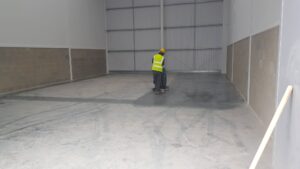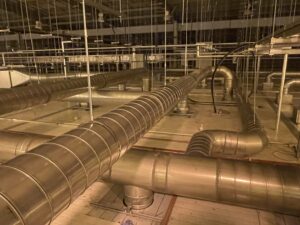As the project neared completion on our newly developed commercial scrap yard in Kent, we quickly realised that the build phase, though successfully delivered, had left behind a significant challenge: a site coated in construction residue, heavy debris, dust, and hazardous materials. As a company involved in aggregate supply and civil engineering, we are used to dealing with tough environments—but this was different. We were preparing to launch a fully operational, regulation-compliant scrap yard and needed the site to meet stringent health, safety, and environmental standards from day one.
The facility itself had been designed to serve as a regional hub for scrap processing and recycling. It featured high-volume vehicle movement zones, reinforced concrete bays, administrative offices, and several new steel-framed buildings equipped with operational plant and equipment. The complexity and scope of the build had created an equally complex cleaning requirement that could not be handled by internal staff or a general cleaning service.
The problem became immediately clear once the construction teams withdrew. Fine construction dust had settled into every surface—including high ledges, light fixtures, and ventilation systems—while adhesives, silicone residue, paint splashes, and concrete dust layered walkways, walls, and glazing. Outdoor areas were strewn with pallet wood, metal fixings, packaging materials, and remnants of groundwork activities. Safety markings were obscured, office spaces were completely unusable, and the overall visual appearance undermined the professional standard we needed to present to both inspectors and commercial partners.
What made this situation more pressing was the potential danger of not addressing it thoroughly. Fine particulate matter in the air posed respiratory risks to staff. Leftover residues on concrete surfaces made the yard dangerously slippery underfoot, particularly during wet weather. In some areas, poor visibility of line markings and access signage could have led to vehicle collisions or misdirected deliveries. Not only was this a threat to health and safety, but it also risked breaching the regulatory standards we are committed to upholding.
What caused the problem was not poor workmanship during construction—it was simply the unavoidable reality of a major industrial build. Multiple contractors working across disciplines had each contributed to the accumulation of residue and detritus. The presence of heavy plant machinery, welding, cutting, and external groundwork left layers of dust and debris far beyond domestic or routine commercial cleaning needs. In other words, this wasn’t a mess—it was an operational barrier.
The most immediate impact of this was the delay to our launch schedule. With cleaning beyond our internal capabilities, every day that passed without professional intervention meant idle assets and deferred operations. It was not just a question of optics or presentation; the site was not safe for staff, equipment use, or commercial engagement. We were unable to begin onboarding suppliers or accepting material loads, which in turn delayed revenue flow and disrupted commitments already made to clients and stakeholders.
There was a very real opportunity being lost here. Had the issue persisted, we risked reputational damage, potential fines, and strained relationships with partner companies who were expecting timely integration into our new facility’s processes. Moreover, the inability to demonstrate readiness to environmental health and safety officers would have meant a failed inspection and even longer delays. Our new site, a major investment and strategic asset, was at risk of becoming an expensive liability.
That’s when we engaged a specialist team with a strong track record in post-construction industrial cleaning. After an on-site assessment, they proposed a full-scope intervention tailored to both the unique layout of the scrap yard and the risks associated with heavy industrial waste processing environments. Their plan was built around a phased, methodical approach that minimised disruption to our internal preparations while ensuring every corner of the site was brought up to standard.
They committed to a multi-day clean, beginning with high-level dust removal using anti-static equipment to avoid spreading fine particulates. Industrial vacuums equipped with HEPA filtration systems were used to clean all internal office areas, followed by detailing work on windows, frames, and surfaces to eliminate silicone and paint overspray. Exterior walkways and operational zones were power washed using controlled-pressure techniques to protect surface integrity, and all packaging waste, construction remnants, and hazardous scraps were removed in accordance with waste segregation guidelines.
Special attention was paid to the cleaning and degreasing of hardstanding areas, which required removal of concrete slurry and fine gravel that had been embedded into joints and gullies. Line markings were carefully uncovered and repainted where necessary. All equipment zones were cleared, inspected, and documented to provide peace of mind before use. Finally, the team implemented a sanitisation process across office and welfare areas using eco-friendly, HSE-approved cleaning agents.
The results were immediate and transformative. Within four days, the entire site had been turned around. Our offices were ready to receive staff, our safety inspections passed on first presentation, and the site met all operational and visual standards we had aimed for from the outset. Our operations team was able to commence onboarding procedures with suppliers and transport partners, and we went live the following week without further delay.
Perhaps more importantly, the professionalism of the clean gave us the confidence to open our doors to clients, regulators, and partners knowing we had met not only compliance thresholds but the high visual and hygiene standards that underpin trust in a facility of this kind. We avoided the cost of rework or penalty, and instead entered operations with momentum and credibility.
In hindsight, attempting to manage this clean internally or with an inexperienced service provider would have posed far too much risk. The specialist team brought in not only addressed the visible issues, but identified hidden hazards and treated them using industrial-grade equipment and compliance-driven methods. Their work laid the foundation for everything that followed.
This experience has reshaped how we approach post-build transition. Professional post-construction cleaning is not a luxury—it’s an operational imperative. In our case, it was the bridge between a finished construction project and a successful business launch. We won’t undertake another major build without having this service built into the close-out strategy from the start.



